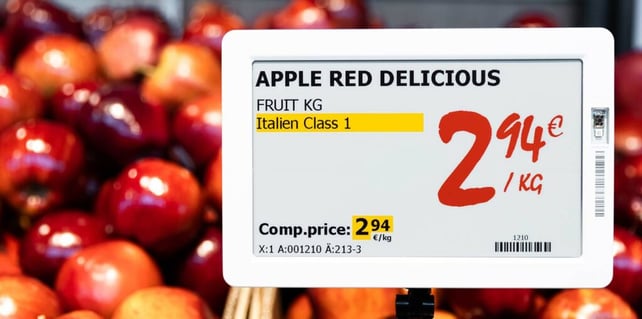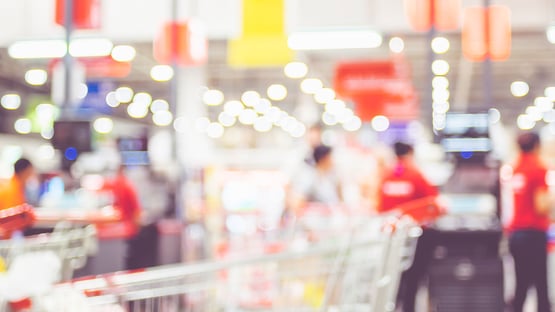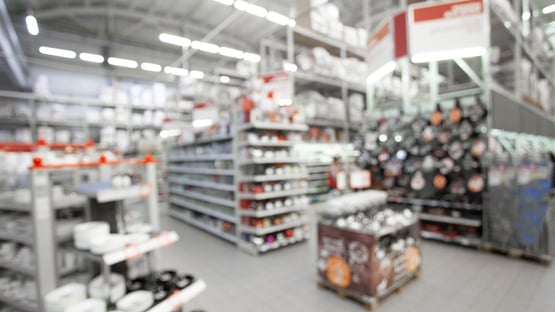Innovation is not always about introducing brand new tech in the store, but by working smarter with what might already be in place and discovering how 1 plus 1 may often equal 3, says Duncan Potter, CMO of Pricer.
There is a lack of joined-up thinking around the use of tech in-store as retailers try to create the store of the future post pandemic.
First of all, the store of the future can look like a scary place given the level of automation that some companies are pushing. It feels sometimes that the tech has been put before the human; robots for instance. Clearly, there is a place for robots in retail, both in-store and even more clearly in the warehouse, but the jury is still out.
The reason I think is that some tech innovation addresses a single problem but ignores critical elements of the whole journey. Using the robots example again, their deployment may well improve the speed and accuracy of stock counts and also add value by identifying shelf gaps, inaccurate or missing pricing, and stock levels that may be off-planogram.
However, there are two key groups of stakeholders to consider, staff and customers, that may not be part of the decision-making process to deploy, and lead to an endless round of pilots that do not lead to a roll-out.
It is also worth adding at this point that innovation is often considered for its own sake, because it is new and exciting whereas, in the area of store automation, there is already available a host of automation that has been around for many years and is both tried and tested.

Retailers are probably the toughest buyers in any industry, so any tech company believing they are about to sign up to a whole host of new stuff are likely to be disappointed; a more practical and affordable answer might already be available or, better still, might already be on site.
One perfect example is electronic shelf-edge labeling (ESLs). It fits the commercial business case in terms of instant, constant and accurate price compliance, as well as cutting the labour bill which as everyone knows is continuing to rise as a result of staff shortages and workplace regulation. It also helps reduce waste which has two benefits – cost savings and reputation.
Research across retailers already using these technologies shows that time saved is typically 50% and waste is reduced typically by 20-40%. Depending on current processes and waste level in the business, this equates to €8 000 – 15 000 per year. And by adding dynamic pricing based on date, which ESLs can do, waste is reduced even further because each item is offered for sale at the price most likely to move it whilst maintaining the most margin.
In addition, ESLs provide a valuable benefit to the consumer in terms of confidence in the price, easy access to ingredient and promotions information and the positive experience of being in a clean, efficient, and modern environment.
Our own research among consumers across Europe bears this out; 57% said they would like to have more access to product information in addition to pricing at the shelf edge, a further 57% also said they would like to see sourcing or ingredients information at the shelf edge.
That’s a business case right there, but now consider other technologies that are available, such as digital signage, which is complementary to ESLs and makes the shopping experience easier and more immersive for customers that visit stores for just the reasons.
In the research, 49% said they would like more digital signage or information at the shelf edge to help inform their buying decision.
Existing technologies, when implemented together, provide further benefits that will define the store of the future. The focus of ESLs has tended to be on what is missing from the shelf, but using flash technology, stock can alert store staff to its location. This is valuable for two key store tasks that are currently costly – replenishment and online order picking.
By using labels with flash as well as location mapping for staff to find the right place more easily, time saved on each SKU replenished is between three and six seconds. At a sell-through rate of 20,000 items per day in batches of 10 items, time saved is four seconds. At €20 hourly cost this adds up to a saving of more than €16,000 per annum. Further time is saved because the problem of putting items in the wrong place is eradicated.
The savings are just as dramatic for online order picking, particularly given that retailers delivering orders to homes or picking for click and collect is currently unprofitable.
Electronic labels equipped with flash to indicate location of each and every item cut the time to pick each item by between five and ten seconds. Based on 100 orders of 30 items per order paying staff €20 per hour seven days a week, averaging each pick at seven seconds equates to a saving of more than €42,500 per annum.
This is not a polemic against innovation, far from it, but a call to introduce it more intelligently, recognising that it may already be in place and may simply need refreshing or integrating with other technology.
This article was originally published in ISN Magazine on July 11, 2022



